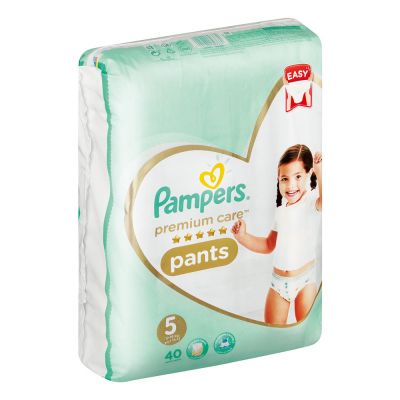Welcome to sainsider.co.za, a comprehensive platform for anything South Africa. In this article, we will be talking about pampers prices in South Africa. Kindly stay with us.
Overview
A diaper / pampers is a type of underwear that allows the wearer to urinate or defecate without using a toilet by absorbing or retaining waste products to prevent soiling of outer clothing or the surrounding environment.
When diapers get wet or dirty, they must be changed by a second person, usually a parent or caregiver. Failure to change a diaper on a regular enough basis might lead to skin problems in the area covered by the diaper.
Cloth or synthetic disposable materials are used to make diapers. Cloth diapers are made of layers of fabric that can be cleaned and reused numerous times, including as cotton, hemp, bamboo, microfiber, or even plastic fibers like PLA or PU. Disposable diapers are made of absorbent chemicals and are discarded after usage.
Diapers are primarily worn by infants, toddlers who have not yet been potty trained, and children who have bedwetting problems. Adults utilize them in particular contexts or for certain conditions such as incontinence.
Adult users can include the elderly, hospitalized patients, those with specific forms of physical or mental disabilities, and anyone working in severe environments, such as astronauts. It is not uncommon for people to use diapers underneath their dry suits.
Types Of Pampers
Disposable
Marion Donovan, a professional-turned-housewife who wished to keep her children’s clothing and bedding dry while they slept, designed the first waterproof diaper cover in 1946. She also designed the first paper diapers, but executives did not invest in the idea, so it was shelved for more than 10 years until Procter & Gamble incorporated Donovan’s design ideas to produce Pampers. Valerie Hunter Gordon invented and patented another disposable diaper concept in 1948.
Product developments have included the use of superabsorbent polymers, resealable tapes, and elasticized waist bands since their introduction. They have become significantly thinner and more absorbent. With the introduction of training pants and pant diapers, which are now undergarments, the product line has lately expanded into the children’s toilet training phase.
Cloth Diaper
Cloth diapers are reusable and can be constructed of natural or synthetic fibers, or a combination of the two.
They are frequently made from industrial cotton that has been bleached white or left in its natural hue. Wool, bamboo, and unbleached hemp are some other natural fiber textile materials. Man-made materials may be employed, such as an inside absorbent layer of microfiber toweling or an external waterproof layer of polyurethane laminate (PUL). Because of their non-absorbent characteristics, polyester fleece and imitation suedecloth are frequently used inside cloth diapers as a “stay-dry” wicking liner.
Usage Of Pampers/Diaper
Children
Babies’ diapers may need to be changed five or more times per day. Spare diapers and other diaper-changing essentials are frequently carried by parents and other primary child care providers in a dedicated diaper bag.
Diapering could be a fantastic bonding experience for parent and child.
Because feces includes urease, which catalyzes the conversion of urea in urine to ammonia, which can irritate the skin and produce unpleasant redness, children who wear diapers may have skin irritation, often known as diaper rash.
The age at which children should stop wearing diapers and begin toilet training is a point of contention.
Eliminationists and supporters of baby-led toilet training Potty training can begin from infancy, with diapers only needed as a backup, according to communication experts.
Keeping children in diapers into infancy is debatable, with family psychologist John Rosemond calling it a “slap to the intelligence of a human being” to enable a kid to continue soiling and wetting himself past the age of two.
T. Berry Brazelton, a pediatrician, feels that toilet training is the child’s decision and has promoted this viewpoint in several commercials for Pampers Size 6, a diaper for older children. Brazelton warns that forced toilet training might have catastrophic consequences.
Adults
Diapers, while most frequently associated with babies and children, are also worn by adults for a variety of reasons. They are commonly referred to as “adult absorbent briefs” rather than diapers, which are connected with children and may have a negative connotation.
Adult diaper use can be embarrassing, and items are frequently sold under euphemisms such as incontinence pads. Adult diaper users are most commonly people with medical disorders that cause urinary incontinence, such as bed wetting or fecal incontinence, or those who are bedridden or otherwise limited in their mobility.
Pampers Prices In South Africa
Below are the prices of pampers in South Africa.
| Pampers Premium Care Pants Size 5 Vp- 40 | R 199.95 |
| Pampers Premium Care Value Pack | R 199.95 |
| Pampers Active Baby-dry Jumbo Pack | R 199.95 |
| Pampers Premium Pants 36’s Xl, Jumbo Pack | R 199.95 |
| Pampers Active Baby Pants Size 3value Pack 52’s | R 219.95 |
| Pampers Active Baby Pants Size 5 Value Pack 40’s | R 219.95 |
| Pampers Pure | R 249.95 |
| Pampers Baby Wipes Aqua Pure 3’s – 3×48 | R 104.95 |
| Pampers Baby Wipes Fresh 1’s – 1×64 | R 34.95 |
Thank you for reading our todays topic on pampers prices in South Africa. we hope to see you again.
